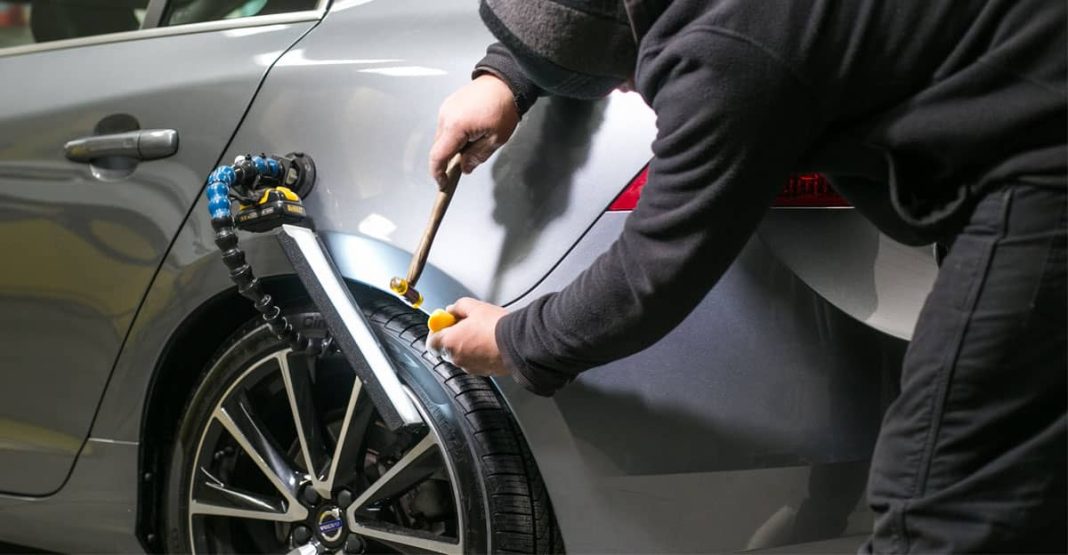Hailstorms can wreak havoc on your vehicle, leaving behind dents, cracked windshields, and other damage that can be costly to repair. If you’re caught in a hailstorm, one of the first questions that come to mind is whether your insurance will cover the damage. Understanding your vehicle insurance coverage when it comes to hail damage is essential to ensuring you’re protected and can quickly navigate the claims process.
In this article, we’ll break down the essentials of vehicle insurance coverage for hail damage, explain the steps to take after a storm, and offer tips for managing the claims process.
1. Types of Insurance Coverage for Hail Damage
Not all auto insurance policies cover hail damage. The type of insurance coverage you have determines whether hail damage will be taken care of. The key term to know here is comprehensive coverage.
Comprehensive Insurance
- What It Covers: Comprehensive insurance is the coverage that typically includes damage from natural events like hailstorms. In addition to hail, it also covers other non-collision damage such as theft, fire, vandalism, and flooding. If your vehicle sustains damage from a hailstorm, comprehensive coverage is what protects you financially.
- What It Doesn’t Cover: Comprehensive coverage does not pay for damage caused by accidents with other vehicles or objects (that’s covered under collision insurance). It also won’t cover normal wear and tear on your vehicle.
Liability and Collision Insurance
- Liability Insurance: This is the most basic level of coverage and is required by law in most states. It covers the costs of damage you cause to others but does not protect your vehicle from hail damage or other non-collision-related damage.
- Collision Insurance: While collision insurance covers damage to your vehicle in the event of an accident with another vehicle or object, it does not extend to hail damage.
To be fully covered in the event of a hailstorm, you need to have comprehensive insurance in addition to the standard liability and collision coverage.
2. Deductibles and Claim Payouts
Even with comprehensive insurance, you’ll likely need to pay a deductible before your insurance kicks in to cover the hail damage. The deductible is the amount you agree to pay out of pocket in the event of a claim, and it can range from $250 to $1,000 or more, depending on your policy.
How Deductibles Work
- Let’s say you have a $500 deductible, and the cost to repair your hail-damaged vehicle is $2,000. You would be responsible for paying the first $500, and your insurance would cover the remaining $1,500. If the cost of repairs is less than your deductible, you would cover the entire cost yourself, and your insurance wouldn’t come into play.
When choosing your deductible, it’s important to strike a balance between affordable premiums and out-of-pocket costs. A higher deductible generally means lower premiums but more expense in the event of a claim.
3. What to Do After Your Vehicle Sustains Hail Damage
If your vehicle is damaged in a hailstorm, taking the right steps can make the claims process smoother and help ensure you get the most out of your insurance coverage.
Steps to Take:
- Document the Damage: As soon as it’s safe to do so, inspect your vehicle for damage. Take clear photos of any dents, cracked windows, or chipped paint. These photos will be important when filing your claim.
- Contact Your Insurance Provider: Notify your insurance company about the damage as soon as possible. Most insurers have a set window of time during which you must file a claim, so don’t wait too long. Some insurance companies even allow you to submit a claim through an app, making the process faster.
- Get a Repair Estimate: Your insurance provider may recommend approved repair shops, or they may send an adjuster to assess the damage. If you prefer, you can also get a repair estimate from a shop of your choice but check with your insurer to ensure they approve the shop’s assessment.
- Consider Temporary Repairs: If your vehicle’s windows are broken or the damage has left it unsafe to drive, make temporary repairs (such as covering broken windows with plastic) to prevent further damage. Keep receipts for any materials or services, as these may be reimbursed by your insurer.
4. Filing a Hail Damage Insurance Claim
When filing a hail damage claim, it’s important to provide as much detail as possible to ensure your claim is processed smoothly.
Steps in the Claims Process:
- Submit Documentation: In addition to providing photos of the damage, you’ll need to submit any necessary forms or paperwork required by your insurance provider. Your insurer will guide you through this process.
- Inspection by an Adjuster: An insurance adjuster may be sent to assess the damage to your vehicle. They will determine the extent of the damage and provide an estimate for the cost of repairs.
- Approval and Repair: Once your claim is approved, you can move forward with repairs. Depending on the extent of the damage, repairs may be completed in a day or two, especially if Paintless Dent Repair (PDR) is used.
5. Will Filing a Hail Damage Claim Affect My Insurance Rates?
One concern many vehicle owners have is whether filing a hail damage claim will lead to an increase in their insurance premiums. In most cases, claims for weather-related damage like hail will not impact your rates, as these are considered “no-fault” claims.
No-Fault Claims and Premiums
- Because you couldn’t have prevented the hailstorm, insurance companies generally don’t hold these claims against you. However, some insurers may consider the number of claims you file overall when calculating future premiums. If you live in an area prone to frequent hailstorms and make multiple claims over the years, your rates could eventually rise.
6. Hail-Prone Areas: Should You Adjust Your Coverage?
If you live in an area where hailstorms are common, such as Hail Alley (a region that includes parts of Texas, Colorado, and Oklahoma), it may be worth reviewing your insurance coverage and considering adjustments.
Increase Coverage Limits
- If your vehicle is at higher risk of hail damage, you may want to consider increasing your comprehensive coverage limit or lowering your deductible to reduce out-of-pocket expenses. This can provide peace of mind, knowing that you’re better protected in the event of a severe hailstorm.
Consider Garage or Carport Parking
- Some insurance companies offer discounts to policyholders who park their cars in a garage or under a carport, as this significantly reduces the risk of hail damage. If possible, parking in a covered area can also prevent the need for future claims.
Conclusion
Understanding your vehicle insurance coverage is key to navigating the aftermath of a hailstorm. Comprehensive insurance is your best bet for protection against hail damage, and knowing how deductibles work, what steps to take after a storm, and how the claims process unfolds can help you get the repairs you need without unnecessary stress.
If you live in an area prone to hailstorms, consider reviewing your policy and making adjustments to ensure you’re fully covered. Staying informed about your coverage will help you make the right decisions and avoid surprises when the next storm hits.










